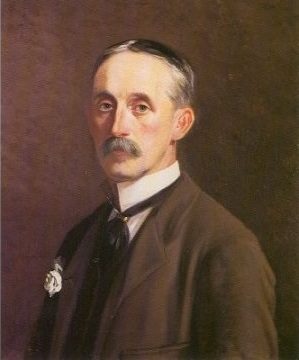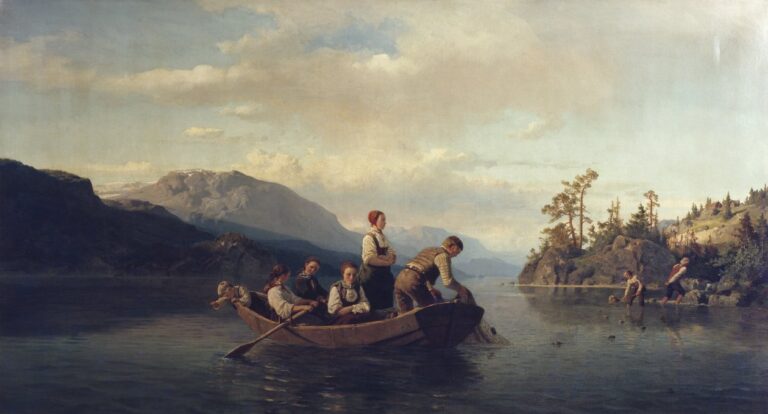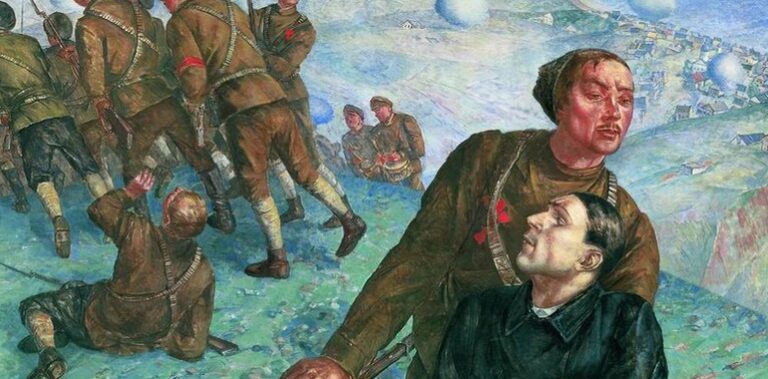Walter Osborne Painter: Irish Impressionist’s Legacy in 19th Century Art
Born: 17 June 1859, Rathmines, Dublin
Death: 24 April 1903, Dublin
Art Movement: Impressionist
Nationality: Irish
Influenced by: Jules Bastien Lepage
Institution: Royal Hibernian Academy Schools of Dublin & Academie Royale des Beaux-Arts
Walter Osborne Painter: Irish Impressionist’s Legacy in 19th Century Art
Life and Career of Walter Osborne
Walter Frederick Osborne, an Irish painter, made significant contributions to the art of impressionism in the late 19th century. His paintings portrayed the everyday life of Dublin.
Early Years and Education
Walter Osborne was born in Rathmines on June 17th, 1859. He came from a family of artists – his father, William Osborne was a popular animal painter.
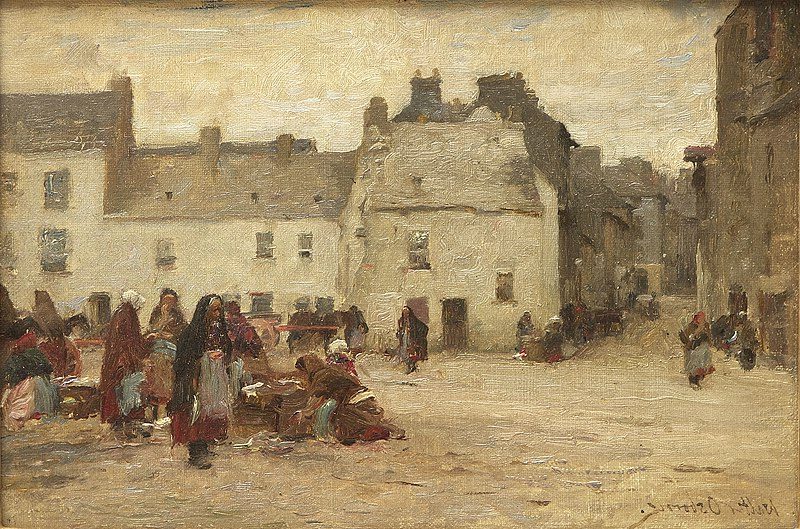
Galway Market Scene by Walter Osborne
Walter studied at the Royal Hibernian Academy Schools of Dublin as a teenager. Later, he traveled to Antwerp in Belgium to further his art education at Academie Royale des Beaux-Arts. He learned from Nathaniel Hill and other talented art teachers.
Osborne was exposed to new artistic techniques and styles from continental Europe.
Progression to Impressionism
Osborne studied abroad and returned to Ireland where he developed his own style. He shifted away from academic paintings to a more impressionistic style. His work focuses on scenes from Dublin’s daily life.
Osborne painted the women, children and elderly going about their daily routines. He captured the play between light and color within urban environments. The loose brushwork, natural light, and influence of the French Impressionists can be seen in his work.
Impact and Recognition
Osborne was a talented man who received many awards. He was awarded the Taylor Prize and elected to the Royal Hibernian Academy. His paintings were displayed at the prestigious Royal Academy of London.

A Grey Morning in a Breton Farmyard (before 1884)
Sadly, Osborne died young, at age 43, in 1903. He is buried at Mount Jerome Cemetery, Dublin. Although his career was short, it left a lasting impression on Irish art. His sensitive depictions of Irish life during the late 1800s are highly valued today.
Artistic Style and Subjects
Walter Osborne’s work combines French Realism, Impressionism and traditional techniques. He painted scenes of everyday life in Ireland, focusing on rural landscapes and urban streets. Portraits of women and kids were also included.
Influence of French Realists and Flemish Painters
Osborne’s style was influenced by French Realists such as Jules Bastien Lepage. He painted outdoors in order to capture the light and atmosphere. He admired Flemish artists, particularly Rubens, for their expressive brushwork and rich colors.
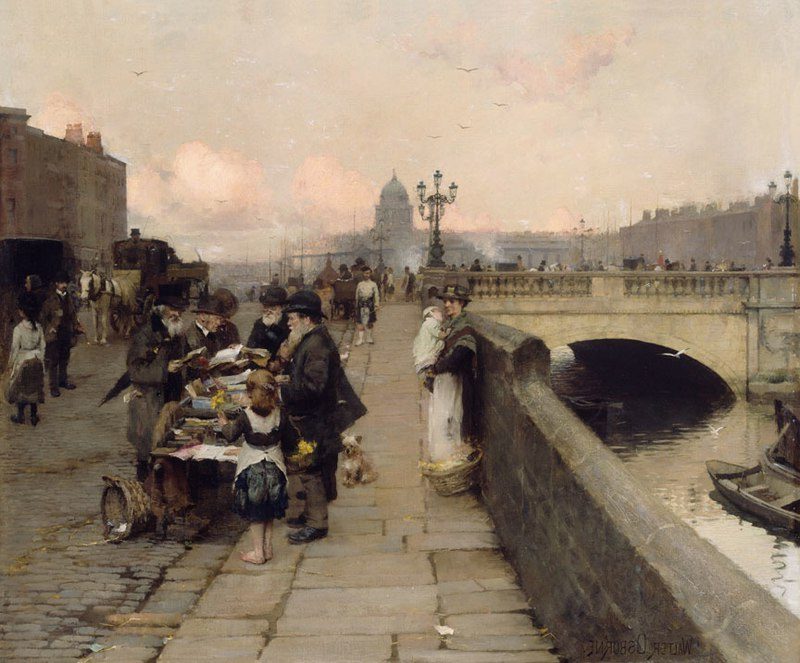
Dublin Streets: A Vendor of Books (1889)
Osborne’s plein air technique allowed him to create vivid and lifelike scenes. He used oils to paint the Irish countryside, paying close attention to the light and shadow. His work was a mixture of loose Impressionism and fine details.
Portraiture and Depiction of Women
Walter Osborne was a master of portraiture. He excelled at painting women and children. He captured the personalities and emotions of his subjects with great sensitivity. His female portraits were often compared with those of French artist Berthe Morisot.
He preferred natural poses and settings to formal arrangements. Osborne’s portraits show people in their normal clothes and environments. His work was of documentary quality, capturing Irish life at the end of the 1800s.
Rural Landscapes and Urban Scenes
Osborne was a painter of both rural and city subjects. His rural landscapes capture the beauty of the Irish countryside. He painted small towns, farms, and fields with an eye for color and light.
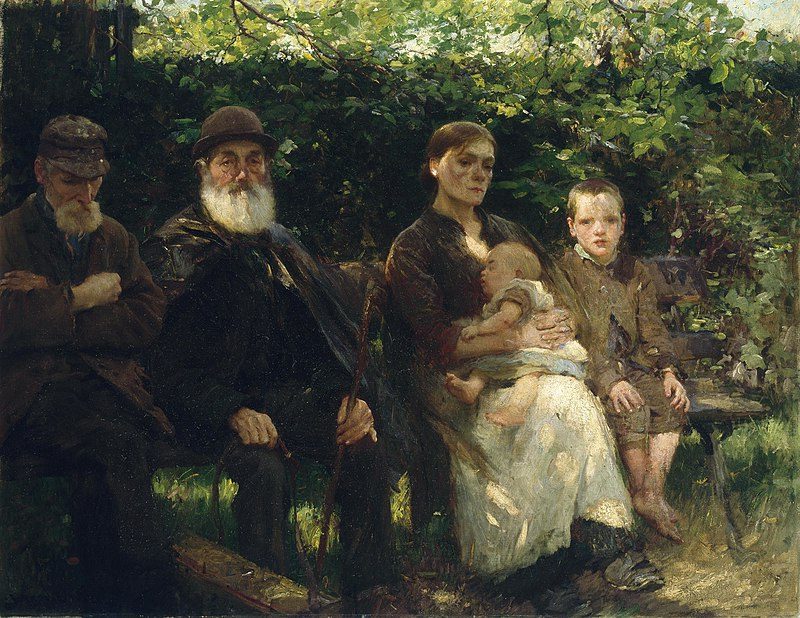
In a Dublin Park, Light and Shade (1895)
Osborne’s urban scenes focused on Dubliners and their streets. He painted city workers, children, and the daily life of the city. These works are a visual history of Dublin in the late 19th century.
Osborne’s urban works often highlight social issues. He depicted working-class people and the poor with respect and empathy. His social awareness made his work stand out from that of many of his peers.
Legacy and Influence
Walter Osborne’s masterful paintings, and his influence on other artists, left a lasting impression on Irish art. His work is celebrated in many museums and collections.
Notable Works and Collections
Osborne is best known for his paintings “A New Arrival”, “Apple Gathering,” and “A New Arrival”. These paintings show his ability to capture Irish landscapes and everyday life.
The National Gallery of Ireland has several of Osborne’s most important works. The collection is highlighted by “Tea in the Garden.”
Osborne’s paintings are also displayed at the Hunt Museum and Dublin City Gallery. Many private collections also have his art.
Osborne’s Contribution to Irish Culture
Osborne significantly influenced the development of Irish Impressionism at the end of the 19th century. His studies abroad helped him bring new artistic styles into Ireland.


His depictions of Irish places and people were a visual record for the time. Osborne’s paintings provide a glimpse into the daily life of Ireland during that period.
Art experts consider Osborne a prominent Irish painter. His works appear in reputable sources such as Art Encyclopedia and the Union List of Artist Names.
Osborne’s use of color and light inspired new Irish painters. His legacy continues to influence Irish art today.
Frequently Asked Questions
Walter Osborne, an Irish painter of the late nineteenth century, was a significant figure in Irish art. He produced many works that capture everyday life in Dublin and the countryside.
What are the most renowned works created by Walter Osborne?
Osborne is best known for his 1885 painting “Feeding the Chickens”. He painted many street scenes in Dublin, showing ordinary people going about the daily business.
In what art movement is Walter Osborne commonly categorized?
Osborne’s work is often grouped with Impressionism and Post-Impressionism. His work focused on capturing the light and color of outdoor scenes.
Can you describe the significance of Walter Osborne in the context of Irish painting?
Osborne played a major role in Irish art during the late 1800s. He introduced new styles of painting to Ireland, such as Impressionism. His paintings are a record of Irish culture during this time.
What were the typical subjects and themes in Walter Osborne’s paintings?
Osborne painted many scenes from everyday life in Ireland. He mainly painted women, children and the elderly. Rural landscapes and Dublin streets dominate his work.
How did Walter Osborne influence the artists of his time and successors in the field of art?
Osborne introduced Impressionist techniques in Ireland. Later, Irish artists were inspired by his focus on everyday people and scenes.
What are the key characteristics that distinguish Walter Osborne’s style from his contemporaries?
Bright colors and free brushstrokes, typical of Impressionism, characterize Osborne’s paintings. He was gifted at capturing the natural light. His paintings showed empathy for his subjects, particularly the poor and working class.


